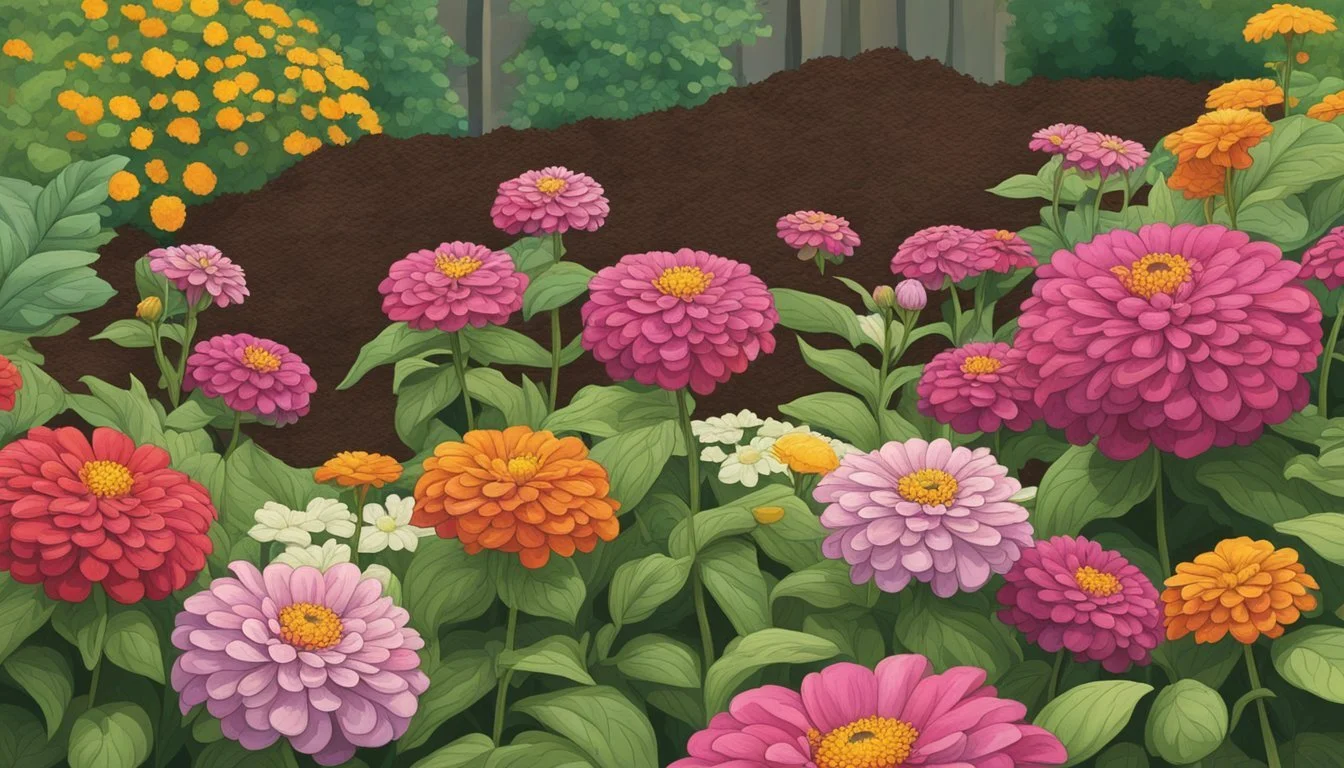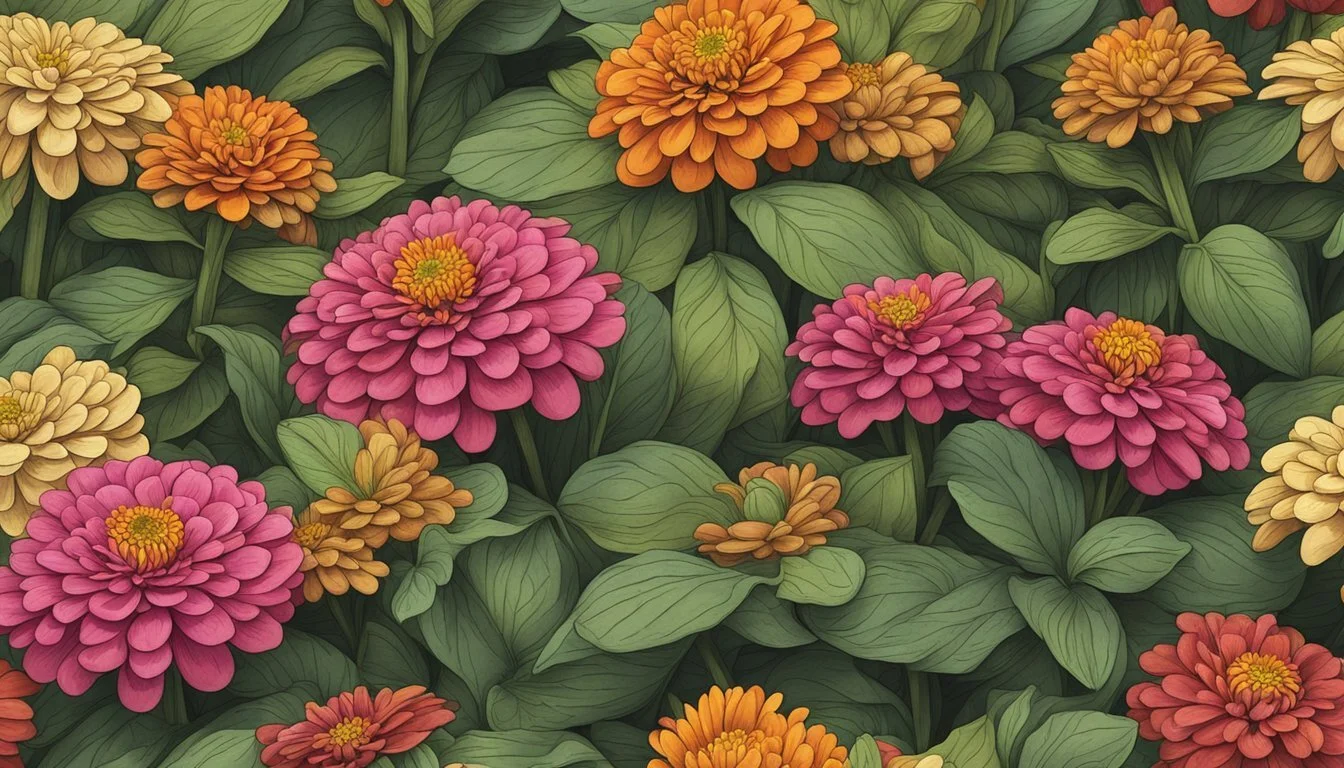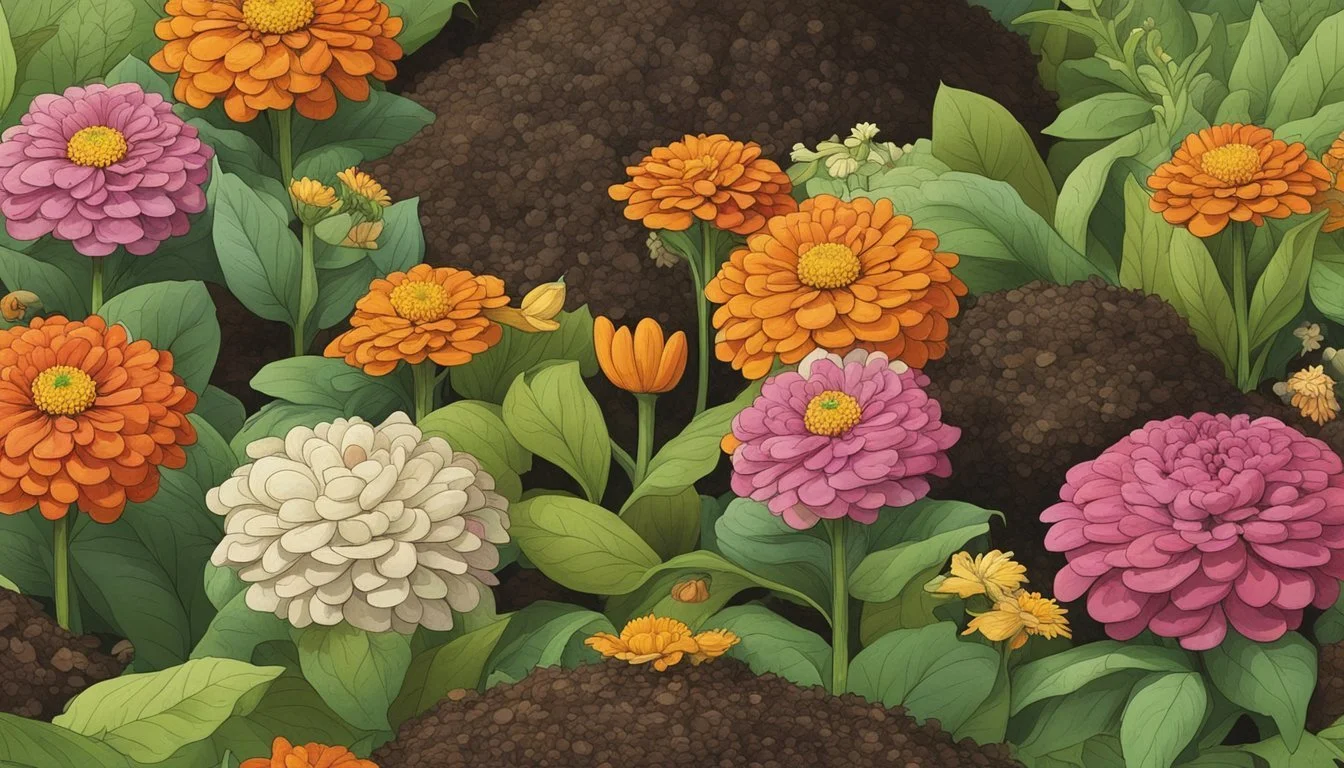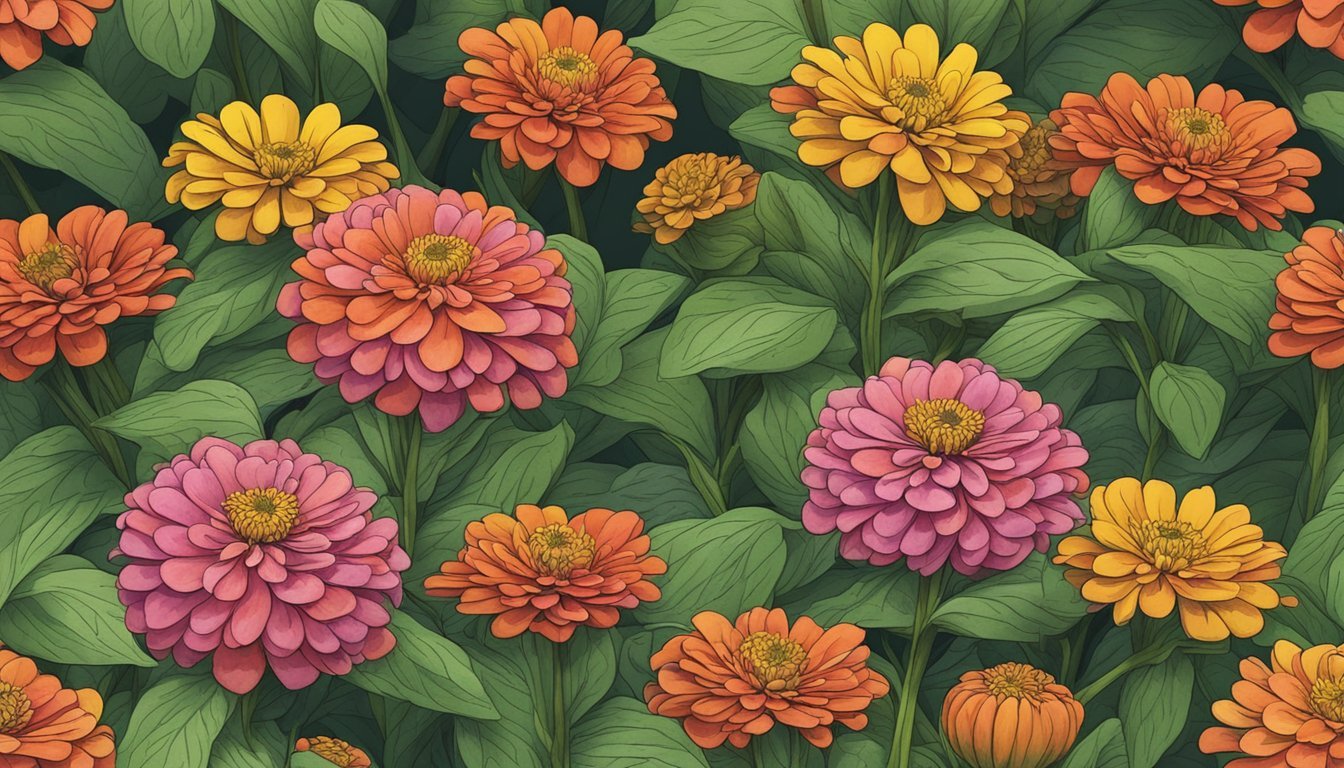Can You Compost Zinnia Flowers?
Understanding Garden Waste Recycling
Zinnia flowers are not only a vibrant addition to any garden but they also serve an important role after they've bloomed. They are excellent candidates for composting, which is a process that recycles organic matter into a rich soil amendment. Composting zinnias can enhance soil fertility and structure, providing benefits far beyond the ornamental garden.
When added to a compost pile, zinnias decompose readily, contributing to the nutrient content of the compost. They are particularly useful because they break down at a moderate rate, releasing nutrients over time, which makes them a valuable addition to a well-balanced compost system. Since zinnias are commonly free from toxic substances and diseases, they are safe to include in compost that will later be used in vegetable gardens and flower beds.
It's important to prepare zinnia flowers for composting properly. Ensuring that they are free from disease and chopping them into smaller pieces before adding them to the compost pile can help speed up the decomposition process. This practice helps maintain a healthy balance between greens and browns - the nitrogen and carbon-rich materials in your compost - fostering an environment where microorganisms can thrive and break down organic matter effectively.
The Basics of Zinnias
Zinnias are vibrant, colorful annuals that bring a variety of shapes, sizes, and shades to the garden. Their adaptability and generous blooming make them favorites among gardeners and ideal for composting.
Understanding Zinnias
Zinnias are part of the aster family, with distinctive daisy-like flowerheads that range from single rows of petals to densely packed doubles. They thrive in warm, frost-free climates and prefer a minimum daytime temperature of about 60°F (16°C), with an optimal range between 74-84°F (23-28°C). Zinnias are typically hardy and grow well in well-drained soil, requiring good air circulation to prevent fungal diseases. As annuals, they complete their life cycle from seed to flower to seed within a single growing season, inviting inclusion in compost bins at the end of their bloom.
Zinnia Varieties
There are numerous zinnia species and cultivars, but two are most commonly grown in gardens:
Zinnia elegans: Known for a wide range of colors and large blooms,
Zinnia angustifolia: Recognized by its smaller flowers and higher drought tolerance.
Zinnias come in a broad spectrum of colors including red, pink, orange, yellow, and green. Besides varying colors, zinnias offer diversity in sizes—from the petite to plants over a foot tall. The vast array of cultivars allows gardeners to select the perfect zinnias for their landscape, whether for cutting gardens or as a border plant. They are typically propagated by seed directly sown into the garden soil after the last frost has passed.
Planting and Growing Zinnias
Successfully cultivating Zinnias starts with understanding their specific requirements—from soil composition to sunlight exposure. The lively Zinnia elegans and the more compact Zinnia angustifolia thrive under similar conditions, with a few variances to note.
Ideal Soil Conditions
Zinnias demand well-draining soil to prevent root rot and fungal diseases. A loamy, moderately fertile soil with a neutral to slightly acidic pH balance proves optimal. Planting depth should be no more than a quarter-inch for seeds, covered lightly with soil. Adequate spacing—about 6-18 inches depending on the variety—ensures good airflow between plants.
Watering and Light Requirements
These flowers crave full sun and require a minimum of 6 hours of direct sunlight per day. While Zinnias are somewhat drought tolerant, they perform best with a consistent watering schedule, especially during prolonged dry spells. Watering should be done at the soil level to avoid wetting the foliage, which can increase the risk of mildew.
Best Time to Plant Zinnias
Plant Zinnias when the threat of frost has passed in late spring, as they are sensitive to cold temperatures. Zinnia seeds can typically be sown directly into the garden where they're to grow. For earlier blooms, start seedlings indoors 4-6 weeks before the last frost date, then transplant them outside when it's warm enough. Summer is also a suitable time to grow zinnias from seed, allowing them the full season to flourish.
Maintenance and Care
Maintaining zinnias involves timely fertilizing and pruning, while vigilance against pests and diseases is crucial to ensure the health and vibrancy of the flowers. Adhering to proper care techniques aids in prolonging blooming and preventing common issues.
Fertilizing and Pruning
Fertilizing: Zinnias flourish with a balanced fertilizer that offers equal parts nitrogen, phosphorus, and potassium. Gardners should apply a 10-10-10 NPK (nitrogen-phosphorus-potassium) fertilizer lightly at the time of planting and again during the flowering season. This ensures optimal growth and bloom quality.
Pruning: Regular pruning enhances air circulation and encourages more blooms. To deadhead, gardeners should snip off the spent flowers just above the next bud to promote continuous flowering. Pinching back young zinnia plants can also result in bushier growth and more flowers.
Dealing with Pests and Diseases
Common Pests: Zinnias can attract various pests such as aphids and spider mites. A proactive approach involves inspecting the plants frequently and responding promptly with insecticidal soap or neem oil spray when pests are detected.
Diseases: Powdery mildew is a common zinnia disease, manifesting as a white, powdery coating on leaves and stems. Fungal issues often arise from poor air circulation and excess moisture. To mitigate disease risk, water zinnias at the soil level to keep foliage dry and ensure proper plant spacing for adequate airflow. If powdery mildew appears, affected areas should be removed and fungicidal treatments can be applied as needed.
Composting Zinnia Flowers
Zinnia flowers are an excellent addition to compost piles, offering both aesthetic appeal in the home garden and enriching benefits to the composting process.
Benefits of Composting Zinnias
Nutrient-Rich Soil: When zinnia flowers decompose, they transform into a high-nutrient additive for soil, enhancing its quality. They serve as a green material in compost, providing essential nitrogen which helps create a balanced compost mixture.
Environmental Impact: Composting zinnia flowers reduces waste and conserves resources by recycling organic material back into the ecosystem, promoting a sustainable cycle in one's home garden.
How to Compost Zinnias Properly
Preparation: Chop zinnia flowers into smaller pieces to expedite decomposition. This increases surface area, allowing microorganisms to break down the material more efficiently.
Compost Pile Management: Place the chopped zinnias into a compost bin or heap. Ensure the pile has a balanced mix of brown (carbon-rich) and green (nitrogen-rich) materials.
Maintenance: Regularly turn the compost to aerate the pile, which will help maintain proper decomposition conditions.
By following these specific guidelines, gardeners can successfully integrate zinnia flowers into their composting routine, thereby enhancing soil quality for edging and border planting in their home gardens.
Designing with Zinnias
Zinnias' versatility in color and size makes them ideal for various design applications in both gardens and cut flower arrangements.
Zinnias in Garden Landscaping
Zinnias are a vibrant addition to any garden landscape, thriving in well-drained soil with full sun exposure. They are annuals, which means they complete their life cycle in one growing season, offering gardeners the opportunity to change the garden's color palette annually.
Height Variation: Gardeners can use tall zinnia varieties, which can reach up to 3 feet, to create an eye-catching background or define a border. Meanwhile, dwarf varieties, standing just 6 inches tall, are perfect for edging or filling containers on patios or balconies.
Color Spectrum: Zinnias come in a range of colors like red, orange, yellow, white, pink, purple, and even green. To design a unified landscape, one can group shades that blend well together or, for a more vibrant effect, mix contrasting colors to create visual interest.
Zinnias for Cut Flower Bouquets
Zinnias' long stems and wide range of colors make them ideal candidates for cut flower bouquets, and their sturdy nature allows them to last well once cut.
Arrangement Tips: For lush bouquets, combine zinnias with foliage and filler flowers to build a bouquet that highlights their bold, disk-shaped blooms. They fit into a variety of bouquet styles, whether seeking a monochromatic scheme or a riot of color.
Container Considerations: If they are to be displayed in containers, consider the height and color of zinnias in relation to the container's size and color to maintain visual harmony.
By integrating zinnias thoughtfully into landscape designs and cut flower arrangements, gardeners and florists can take advantage of their diverse forms and hues to create stunning visual displays.
Special Topics
Exploring specialized aspects of zinnia flowers shows both their ecological benefits, such as attracting pollinators, and practical gardening applications including seed saving and propagation techniques.
Attracting Pollinators with Zinnias
Zinnias are renowned for their ability to draw a plethora of pollinators to the garden. Zinnia elegans and Zinnia angustifolia varieties are particularly attractive to butterflies and hummingbirds due to their vibrant colors and ample nectar. Gardeners find that these blooms not only add aesthetic value to their spaces but serve a vital role in supporting local butterfly populations.
Key Pollinators Attracted by Zinnias:
Butterflies
Hummingbirds
Bees
The abundant flowers of zinnias provide an important food source for pollinators from summer well into the fall.
Seed Saving and Propagation
When it comes to growing zinnias, gardeners benefit from their propagation ease. One can save seeds from zinnia flowers after the blooms have dried at the end of the season. To ensure viable seed collection, allow the flower heads to brown and dry on the plant, then carefully remove and store the seeds in a cool, dry place. Both Zinnia elegans and Zinnia angustifolia seeds can be saved and sown directly into the garden soil after the last spring frost, enabling gardeners to propagate a new generation of zinnias without purchasing new seeds.
Steps for Seed Saving:
Wait for flower heads to dry on the plant.
Harvest dry flower heads.
Separate seeds from the flower head.
Store seeds in a dry, cool environment.
Propagating zinnias from saved seeds is not only cost-effective but also allows for the selection of the hardiest plants which have thrived in local conditions.
Zinnia Cultural Significance
Zinnias carry a rich heritage and symbolism that goes beyond their bright colors and have been appreciated in various cultures for their deep meanings and historical uses.
Historical Use of Zinnias
Zinnias are native to the Americas, with roots in both North and South America. Initially found in the wild, they were later cultivated in gardens. Zinnias were not always as popular as they are today; their journey to acceptance included breeders developing more attractive cultivars, which gradually garnered them appreciation as a significant garden plant across continents. Their name honors the German botanist Johann Gottfried Zinn.
Zinnias in Art and Symbolism
Zinnia Meanings:
Pink Zinnias: Associated with happiness, gentleness, and non-romantic love.
Purple Zinnias: Symbolize elegance, royalty, and success.
Zinnias are often compared with daisies and dahlias due to their similar floral shape, although each carries individual symbolism. In art and symbolism, zinnias are known to represent endurance and daily remembrance. Within certain cultures, such as Mexican, zinnias hold a place of honor during celebrations of life, often used in memorials. They've also been a favorite in Victorian times for expressing affectionate feelings and for their beauty in gardens.








